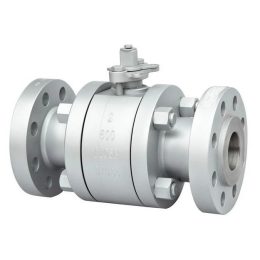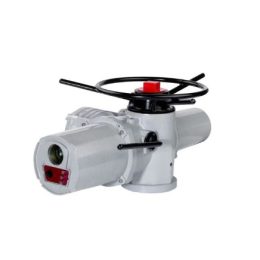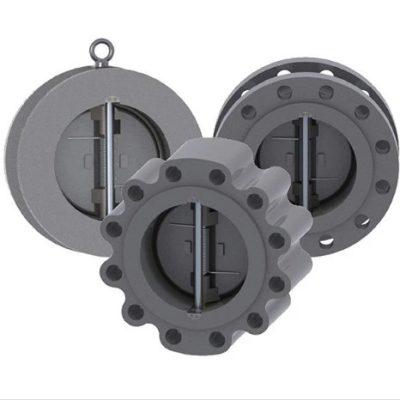
Wafer Check Valve
Introduction
The wafer check valve’s center vertical pin shaft is critical to its operation. The fluid force is on the center of the sealing face when open, while the counter spring support force’s point of action is on the center of the surface, causing the root to open first. This design avoids wearing of the sealing face of older valves when they open, increasing valve seal persistence. When fluid slows down, the counter force of the torsion spring moves the clack towards the seat, and the valve is in the slow-off stage. When fluid flows backward, closing is increased, and the valve enters the rapid-closing stage under the force of the backflow fluid and the counterforce of the torsion spring, reducing the influence and harm of water hammer. The single clack swing wafer connecting check valve prevents backflow of the medium and is designed to be connected through a wafer. Stainless steel or stellite build-up welding may be applied for the sealing face of the valve body and valve clack.

Technical Specifications:
| Description | Specification |
|---|---|
| Sizes | NPS 2 to NPS 48 |
| Pressure Class | Class 150 to 2500 |
| Casting Materials | A216 WCB, WC6, WC9, A350 LCB, A351 CF8, CF8M, CF3, CF3M, A995 4A, A995 5A, A995 6A |
| Other Materials | Alloy 20, Monel, Inconel, Hastelloy |
| Plate | Dual Plate or Single Plate |
| Connection | Wafer, Lug and Flanged |
Design Standard
Design & manufacture according to API 594
Face-to-face according to API 594, ASME B16.10
End Connection according to ASME B16.5
Test & inspection according to API 598
Also available per NACE MR-0175, NACE MR-0103
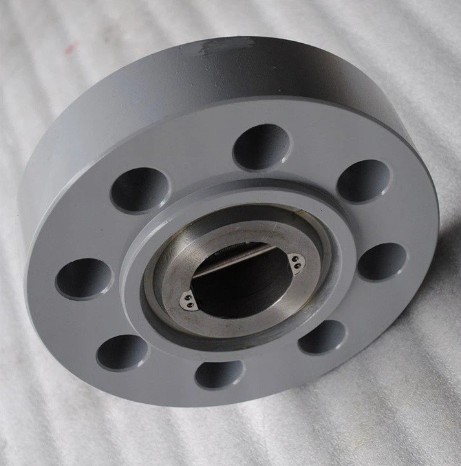
Advantages of Wafer Check Valve
- Compact Design: The wafer check valve is designed to be compact, which makes it easy to install even in tight spaces. It takes up less space than other types of check valves, making it a great choice for applications where space is limited.
- Lightweight: The wafer check valve is significantly lighter than other types of check valves, making it easy to handle during installation and reducing the load on the piping system.
- Low Pressure Drop: The wafer check valve has a low pressure drop, meaning that it does not significantly affect the flow of fluids in the pipeline. This makes it ideal for applications where pressure drop is a concern.
- Versatile: The wafer check valve is suited for a wide range of applications, including water treatment, chemical processing, and HVAC systems.
Applications of Wafer Check Valve
- Water Treatment: The wafer check valve is commonly used in water treatment applications to prevent the backflow of sewage and other contaminants. It is also used in desalination plants to prevent the backflow of seawater.
- Chemical Processing: The wafer check valve is widely used in chemical processing plants to prevent the backflow of corrosive chemicals. It is also used in pharmaceutical manufacturing to prevent the contamination of drugs.
- HVAC Systems: The wafer check valve is used in HVAC systems to regulate the flow of air and prevent the backflow of exhaust gases. It is also used in refrigeration systems to prevent the backflow of refrigerant.
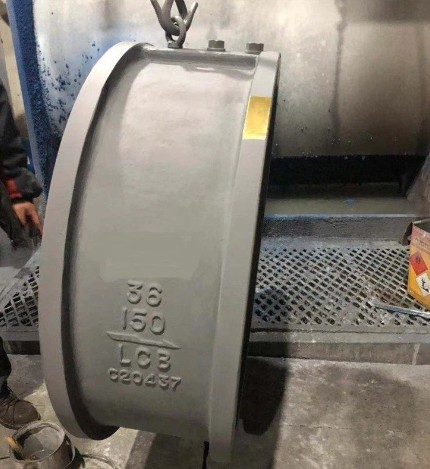
Conclusion
The wafer check valve is a versatile and reliable component in a wide range of industrial applications. Its compact design, lightweight, low pressure drop, and versatility make it an ideal choice for many piping systems. Its applications include water treatment, chemical processing, HVAC systems, and many more. If you need a reliable and efficient check valve for your industrial application, consider the wafer check valve.
- A Lift Check Valve and Its Applications
- Pressure Seal Bonnet Globe Valve
- Trunnion-Mounted Ball Valve: Benefits and Limitations
- Reasons for Rust of Stainless Steel Butterfly Valve
- How to distinguish the structure of the ball valve
- “How a Butterfly Valve Works: Control Flow in Oil, Gas, and Chemical Industries”
